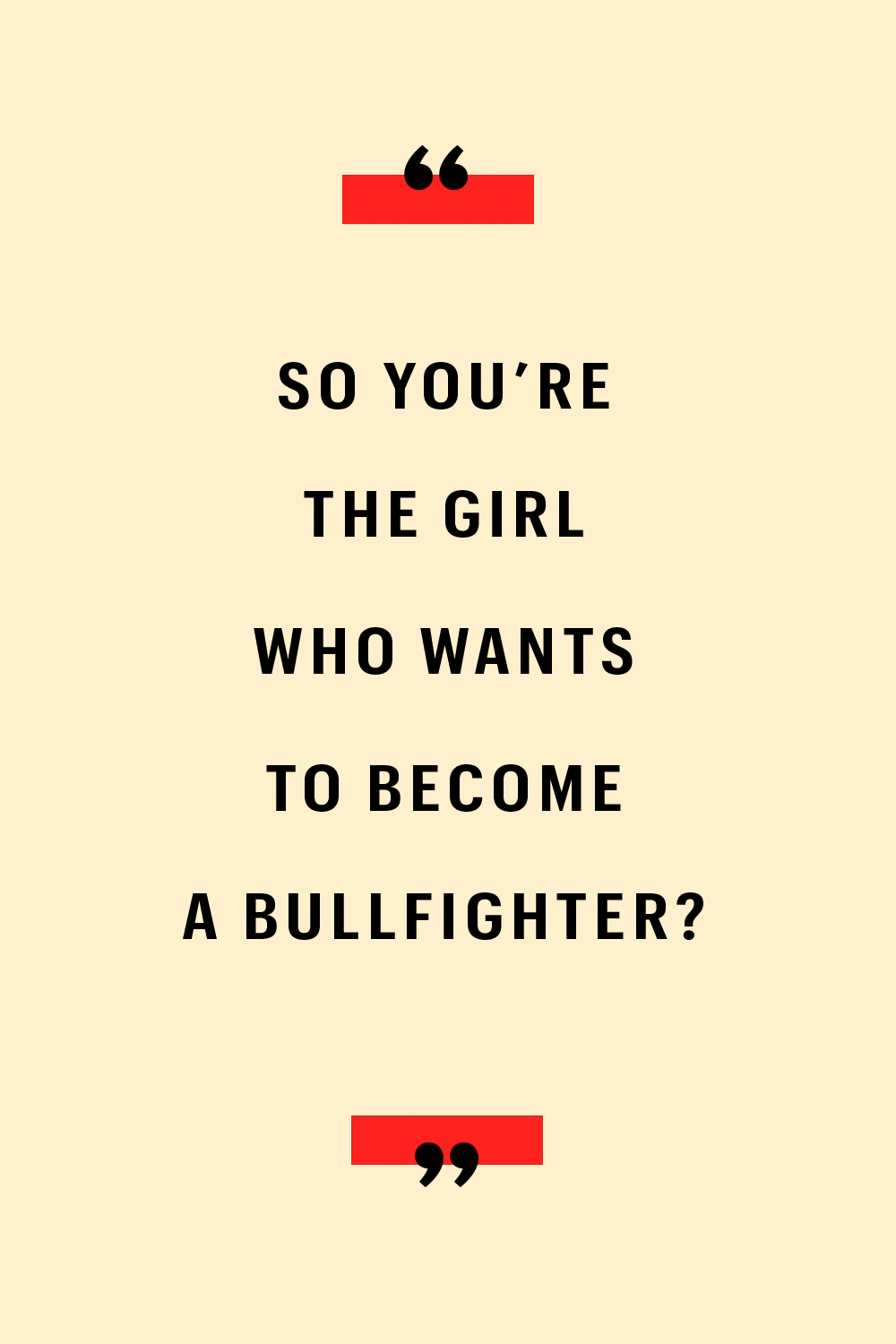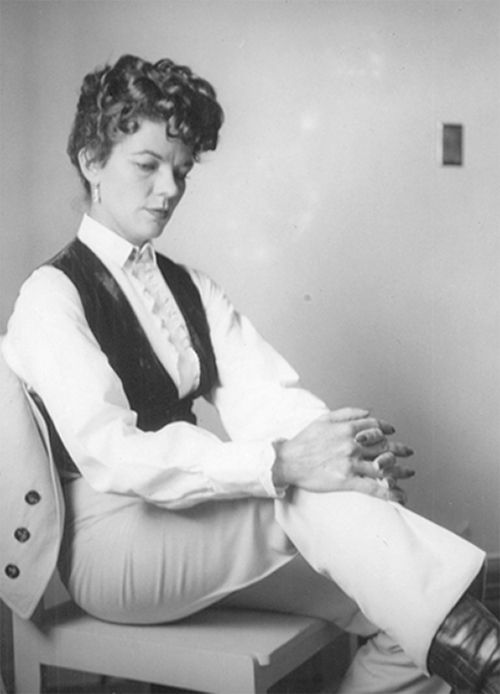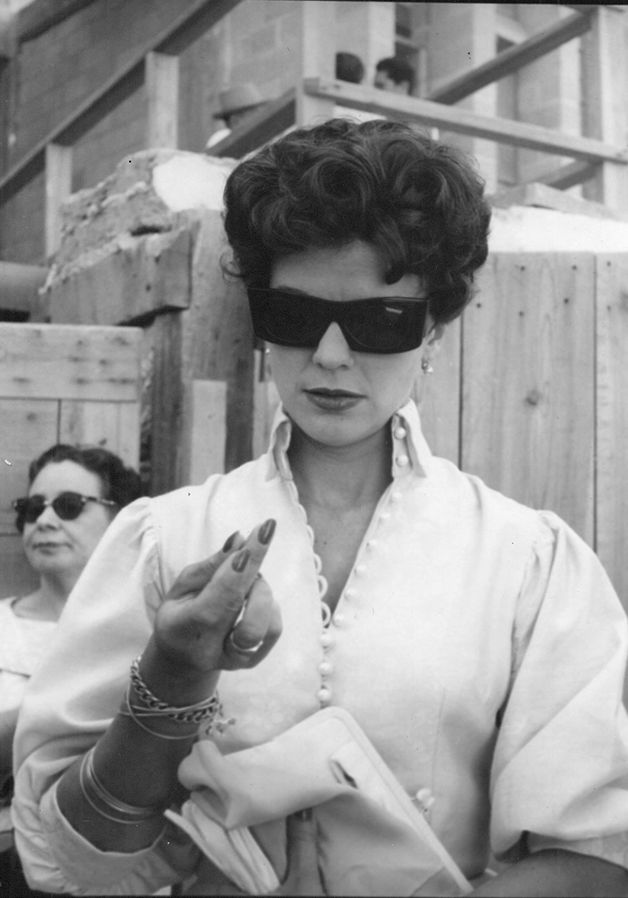Why This Model Left the Glitzy World of Fashion for the Gritty Life of Bullfighting
There are many kinds of multihyphenates in Hollywood: actress-singer, director-producer. In the 1950s Bette Ford turned heads and raised eyebrows when she became a model-actress-bullfighter.

Bette Ford came to New York City from a small town outside of Pittsburgh, PA, with big dreams: The 18-year-old was going to be a model.
Considered too petite for the runway, the 5-foot-4 beauty was quickly turned down by two leading agencies of her day. But a third major agency, Huntington Hartford, took a chance on her, and soon she was landing jobs by capitalizing on her slender yet athletic build and sensual aura. She modeled for Maidenform, sat for magazine illustrators, even snagged a few covers, but her greatest success was with Jantzen as a swimsuit model. Her narrow hips and powerful shoulders made her convincing as a stylish swimmer, despite not knowing how.

Then an assignment came along that changed Ford's life: a photo shoot in Bogotá, Colombia—her first trip abroad. She was so sheltered and unwordly that when she checked in at the hotel, she asked whether her room had been made safe from boa constrictors. Roy Pinney, the photographer for the shoot, who was worldly, learned that the renowned matador Luis Miguel Dominguín would be fighting in Bogotá during the shoot. He arranged for Ford to meet Dominguín at his hotel room.

In the early 1950s, bullfighting was the epitome of glamour, danger, and masculine bravado. Hollywood A-listers followed the bulls in Spain and fraternized with matadors like Dominguín, an international celebrity in his own right. He even stole Ava Gardner from Frank Sinatra for a bit—the two had an affair while the actress was married to the crooner. (Perhaps it was role prep: Gardner later would star in The Sun Also Rises as the seductress of the story's fictional bullfighter, Pedro Romero.)
Smitten with Dominguín, Ford returned to New York, papered her walls with bullfight posters, and began daydreaming of Mexico. She landed the role of understudy in the Broadway drama The Time of the Cuckoo, but told MarieClaire.com she "wasn't prepared metaphysically" to settle for understudy. Instead, she and her extra-marital boyfriend at the time, Lewis Allen, drove south to follow the bulls.
In a small arena outside Mexico City, Ford encountered some novilleros (fighters who only battle young bulls) who invited her, half in jest, to train with them. Soon she was spending her mornings at a practice ring, learning the rudiments of cape work as a way of keeping fit.
Ultimately, she was "discovered" by chance: a newspaper sent a reporter and photographer for a column on a promising novice at the ring. Ford caught their eye, and the piece instead became a two-page spread on her. The article captured the attention of Dr. Alfonso Gaona, organizer of the Plaza Mexico, the largest bullfight arena in the world. The next week, Gaona approached Ford and said, "So you're the girl who wants to become a bullfighter?"
Get exclusive access to fashion and beauty trends, hot-off-the-press celebrity news, and more.
Gaona, recognizing Ford's potential as an alluring alternative to the straightforward nature of the handful of other American toreras fighting at the time, brought the empresario of the bullring in Juarez, Juan de Bilbao—a.k.a Don Juan—to manage Ford.

From the beginning, the climate was intensely competitive. Ford was immediately compared to prominent, more experienced female bullfighters, like the American Patricia McCormick, whom the press described as having a "deathly presence" in the ring. McCormick dressed for fights in black or tan suits, her hair in a knot beneath her wide-brimmed black hat. Over her pants she wore plain leather chaps. Juanita Aparicio, whom Ford had encountered on that first trip to Mexico, wore chaps as well.
In contrast, Ford dazzled in white. Her first trajes—the suits that she fought in—were tailored from fine white wool to emphasize her lithe physique. Setting off her dark black hair were a pair of diamond earrings. And she kept her hair loose and tousled, a stunning touch when she doffed her hat and bowed for the audience.

Ford in the arena just before the fight alongside a matador with her signature white suit and diamond earrings. Juarez, 1958
Fighting mainly along the border, in Mexican arenas across the Rio Grande from small Texas towns, Ford gained a reputation for flair and determination. Soon she became a reliable draw, with a following from as far away as Houston and San Antonio. While the other American toreras barely eked out a living, at times sleeping in their cars, Ford earned enough to stay at the same hotels as full-fledged matadors. At first, Don Juan drove her to fights; later, Ford flew in a private plane.
Don Juan promoted her relentlessly, leading the press to cover her every move, such as when she'd cross the border for a makeover at a local salon (both as a model and a bullfighter she occasionally went platinum blonde). Her popularity wasn't always a positive. In the border bullrings the Texas fans were rowdy and not necessarily supportive. They came to see the "Broadway TV star and model turned bullfighter" or "petite Broadway brunette who looks like Elizabeth Taylor." If a bull knocked her down, the fans cheered, yelling "Kill her, bull! Kill her!"
"They want blood, your blood—why else would they come to a bullfight?" says Ford today. "I knew that no one would run in and save me."

Ford's relationship with Don Juan was complex and stormy. In his role as manager, he oversaw her rigorous training regimen, putting her on a boxer's diet that included drinking the blood-rich juices from expensive cuts of beef. He called her each night at 9 p.m. to confirm that she was home and preparing for bed, and he cautioned her against sex in the days leading up to a fight. ("It weakens the leg muscles" Ford remembers him saying). After fights, he massaged the deep bruises left by bulls' horns.
They argued often—about bullfighting, training, her technique, publicity. Ford once slammed a hotel door so hard that it split down the middle, a spillover from her constantly curated aggression in the ring.
"I was angry with the world," says Ford of her rigorous training coupled with the growing animosity in the stands. "I was a fighter. I literally was a killer. I perceived myself as dangerous. "
The tempestuousness of the relationship culminated one Sunday afternoon during a Juarez booking, when Ford argued with Don Juan about a risky maneuver that he wanted her to try. Ford was sipping from a glass of water as the two exchanged words, and when the argument escalated, Ford dashed the water into Don Juan's face—in full view of the crowd. The hometown audience was outraged, and clubs along the border circulated a petition denouncing Ford and calling for her to be suspended.

Ford at home in Brooklyn Heights with her doberman circa 1950
When Ford returned to Juarez a month later, she was awakened on the morning of her fight by sirens. The arena had been set on fire, evidently the work of arsonists protesting her return. But the fight went on, a burned section of bleachers still smoldering throughout the afternoon.
The ultimate dream of the American toreras, and of all Mexican bullfighters, was to fight in the Plaza Mexico. Patricia McCormick had been fighting longer than any of the women, and though she was widely lauded for her bravery and skill, even she had yet to land a booking in the Plaza.

Ford in her hotel room getting ready before a fight. Juarez, 1958
Ford and McCormick were seen as rivals, and by early in 1955, Ford's second year fighting, the press floated tantalizing rumors of their appearing together in the capitol: "A program with these two toreras in competition would fill the Plaza Mexico." The Plaza held nearly 50,000 spectators; most of the arenas along the border were less than a 10th of its size.
In May of that year, Ford was training for the big showdown when she was thrown by a bull. She fractured several of her ribs and bruised her spine badly.
Injuries of this severity were common. In one fight, Pat Hayes, another American torera, suffered a concussion and three broken ribs. Patricia McCormick once almost died in a particularly gruesome incident. She turned her back on a bull who charged, impaling her. Hoisted into the air and unable to free herself, she was rescued by her manager who raced out into the ring and pried her off the horn.
Ford recovered and was well enough to fight again that summer in Juarez, billed as "The Incomparable Beauty of the Bullring." Late in July, a surprising decision was announced: the debuting American at the Plaza Mexico would be Ford alone. But the notion of a woman fighting in the venerable Plaza—an American woman—was met with resistance by the elite Mexican bullfight critics. In their opinion an American had no business competing in the Plaza, no matter her prowess.
Their antagonism didn't stop her. Ford made her historic debut on August 21. She fought well and was awarded an ear from each of her bulls. She went on to fight at the Plaza Mexico four more times that fall, once against Aparicio—Ford in her white suit, Aparicio in chaps. Aparicio was the hometown favorite, Ford the stylish outsider. The critics grudgingly praised Ford for her elegance and courage—and for her skill with the sword.
Ford's fights in the Plaza created a backlash from the matadors and matadors' union, effectively banning women fighters. Ford never fought at the Plaza Mexico again. And none of the other American women fighting at the time ever got their chance there either.

The bookings kept coming, though.
Don Juan finally arranged the long-anticipated showdown between Ford and McCormick in Tijuana. But while watching from the stands, he suffered a heart attack. His doctors sent him to Acapulco to recuperate. A year later he died unexpectedly. Ford was devastated.
More hardship would come. Ford was gored badly for the first time in her career. Her hand was ripped open by a bull's horn and she recalls waiting on the operating table, seeing "little white strands twitching inside my hand." The nurse told her they were her tendons, slipping in and out of her flesh because they had been severed by the horn. She lost the full range of motion in three of her fingers permanently.
After the goring, she became romantically involved with, and then was stalked by, the son of the doctor who operated on her hand. Ford no longer had Don Juan to protect her against such threats. She hired a friend as pistolero and lent him the use of a gun she'd inherited from Don Juan.
By 1958, Ford's busy calendar had begun to take a physical toll. She'd been training six hours a day for half a decade—and fighting as often as she could get bookings. Between the physical strain and the struggles in her personal life (she was divorcing), she decided it was time to return to New York and make another go at stage acting. Then Hollywood intervened.
MGM was considering doing a biopic about her career and brought her to Los Angeles to meet with writers. One of them was John Meston, who'd co-created the radio series Gunsmoke, soon to become the long-running television series. Meston and Ford carried on a whirlwind romance and were married in Las Vegas after Ford agreed to Meston's stipulation that she cease risking her life in arenas. It was an easy promise to make—she was finished with bullfighting anyway.

Ford on the morning of a bullfight, Juarez, 1958
Eventually Ford reinvented herself again, this time as a film and television actress, and made regular appearances, usually as a dark-haired temptress, on network dramas such as L.A. Law and Cheers. Her most recent feature film was the indie comedy Valley of the Sun (2011). She continues to act, mostly doing voiceover for animation.
When Ford reflects about her bullfight career now, she emphasizes her sense of accomplishment above all else. "I look back now and I think, I did that. But I never thought about grace and elegance and beauty when I was in the ring. I thought like a bullfighter."

Fortunato Salazar is a Los Angeles-based writer whose most recent writing about bullfighters appears in Amtrak's The National.
Motion Graphics: Crystal Law
Follow Marie Claire on Facebook for the latest celeb news, beauty tips, fascinating reads, livestream video, and more.